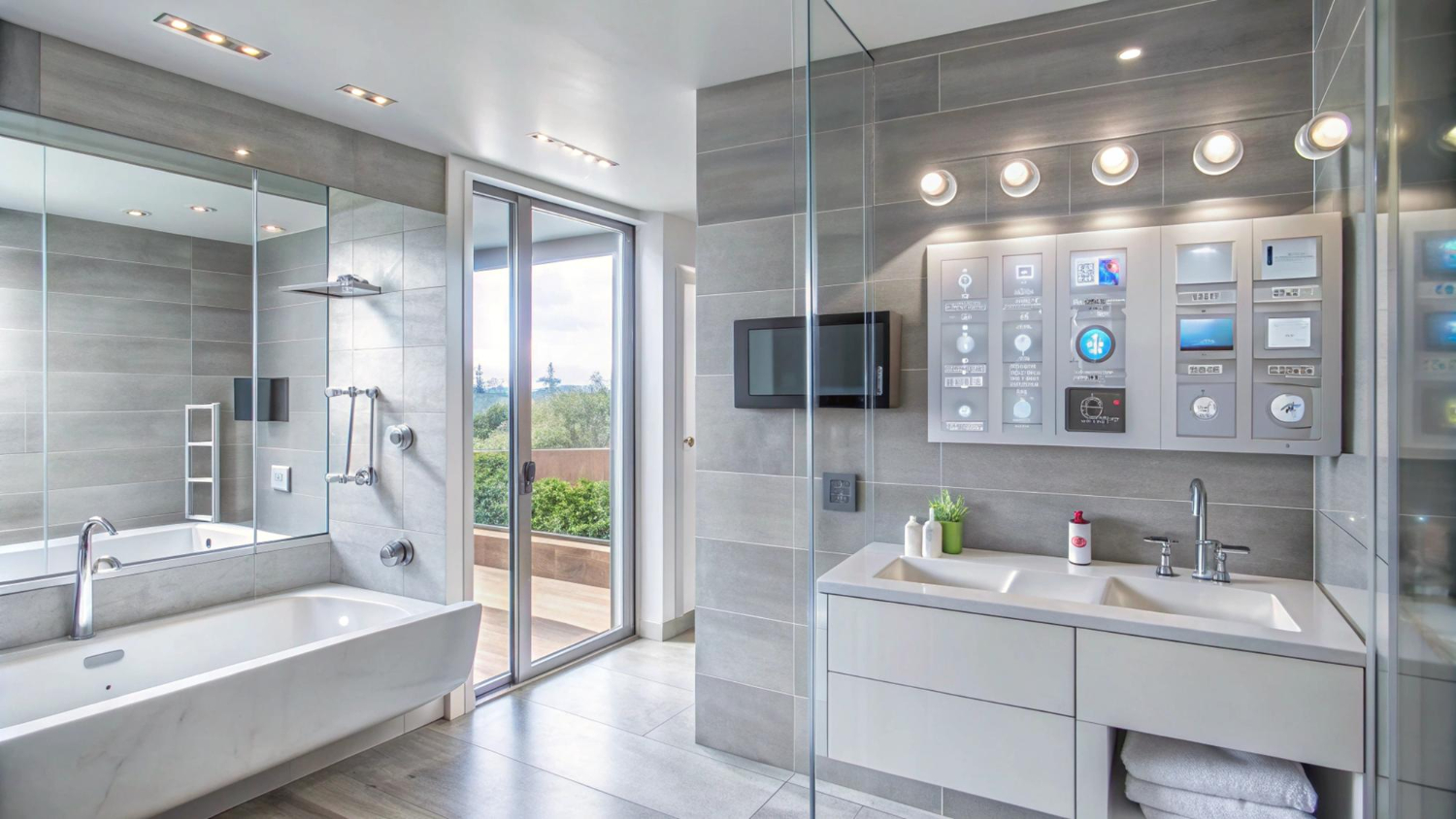
When you’re giving your bathroom a makeover, it’s easy to focus on the big stuff – tiles, taps and tubs. But don’t overlook your bath panel. It might seem like a small detail, but it plays a big role in protecting your bath structure and giving your space a polished look. And if you want to avoid future headaches, choosing a durable bath panel material is essential.
In this post, we’ll walk you through the top 5 most durable materials for bath panels, their pros and cons, and how to pick the one that works best for your bathroom and lifestyle.
Table of Contents
Top 5 Durable Materials for Bath Panels
1. Acrylic
Acrylic is a favourite for a reason. It’s lightweight, completely waterproof, and easy to keep clean – just a quick wipe down now and then. It’s often found in modern bathroom suites because it blends seamlessly with acrylic bathtubs.
Pros: Waterproof, affordable, easy to clean, widely available. Cons: Can scratch if you’re not careful, and may feel a bit “plasticky” compared to higher-end options. Best for: Quick bathroom refreshes, family homes, or rental properties.
2. MDF (Moisture-Resistant)
Moisture-resistant MDF panels are a budget-friendly option that can be painted or laminated to suit your bathroom décor. While standard MDF will swell when exposed to water, the moisture-resistant variety holds up much better – provided it’s properly sealed around the edges.
Pros: Affordable, easy to customise with paint or finishes. Can add a refined finish for your bath. Cons: Needs to be sealed well or it can absorb water over time. Best for: Stylish looks on a budget, especially when you’re after a painted or panelled finish.
3. PVC (Plastic Composite Panels)
PVC bath panels are all about function. They’re completely waterproof, super durable, and easy to fit – making them a go-to for hassle-free installations. Many now come in textured or wood-effect finishes too, so they don’t have to look cheap.
Pros: Fully waterproof, long-lasting, low maintenance. Cons: Some designs can look a bit basic or dated without the right finish. Best for: Busy households, buy-to-let properties, or those needing a quick, reliable solution.
4. Tile-Backed Panels (with Waterproof Core)
Want your bath panel to match your walls or floor? Tiled panels with a waterproof core (like foam or cement board) can give you that seamless, spa-style finish. When installed properly, they’re incredibly robust and visually striking.
Pros: Customisable, highly durable, excellent water resistance. Cons: More expensive and labour-intensive to install. Best for: High-end renovations and homeowners looking for a luxury finish.
5. Solid Surface Materials (like Corian® or Resin-Based Composites)
If you’re going for something sleek and built to last, solid surface materials tick all the boxes. These engineered panels are non-porous, resistant to mould, and incredibly strong. They’re a premium choice, but the quality shows.
Pros: Stylish, long-lasting, mould and stain resistant. Cons: Comes with a higher price tag. Best for: Contemporary bathrooms and long-term home investments.
Elements to Consider with a White Bath Panel
Are you trying to narrow down the right bath panel for your renovation? While the material is important, you also have to think about the style you’re going for. This means choosing a colour that’s going to improve your bathroom and make you love the new design. One colour that remains a favourite no matter what’s trending is white. Let’s take a closer look at how you can make sure this is going to be the right addition for you.
The Material
White can look different on various materials. For example, if the bath panel is made from solid wood, it can create a premium design and one that has a matte white finish. With PVC and acrylic, the white can be shiny, which can reflect light, but also requires more cleaning. Therefore, always consider the material type when you’re thinking about white. You want to ensure that you’re going to like the style, as well as be able to deal with the maintenance.
The Texture
You also have to think about the texture your bath panel is going to have. Some like a smooth and glossy finish, which can make the room feel lighter and cleaner. Others prefer a matte texture, which can add some character and interest to a bathroom. Indeed, it can help to see these styles in person so that you can explore the texture in more detail.
The Maintenance
Know that white often requires more cleaning than other colours. This is because dirt and splash marks are more visible. So, you have to make sure that you consider the maintenance when you select this colour. Choosing an easy-to-clean material can make sure that it doesn’t become a hassle.
Conclusion
Your bath panel might be one of the more overlooked parts of your bathroom, but picking a durable material is a smart move. Whether you go for acrylic, MDF, PVC, tiles or solid surface panels, there’s something to suit every style and budget.
Think about how much wear and tear your bathroom gets, how long you want it to last, and how much maintenance you’re happy to take on. Choose right the first time, and you’ll avoid unexpected repairs – or worse, having to rip it all out and start again.


